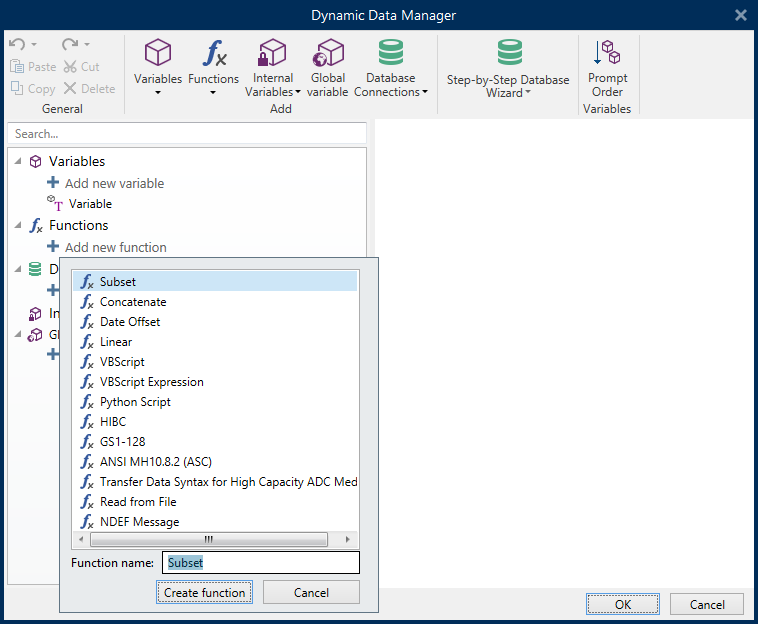Functions
The purpose of functions is to manipulate the data that is assigned to label objects. Functions process the existing data source values and store the result in function-generated data sources.
Each function can be directly connected to an object and used as a part of another function.
Tip
All label
To add a new function to a label

Desktop Designer includes the following function types:
Subset extracts a specific part of data according to the user-specified rules. - Concatenate merges two or more data source values into a single value.
- Date Offset offsets the present date.
- Linear transforms the current value using multiple types of linear functions.
- VBScript allows performing complex value transformations.
- VBScript Expression: is a simplified version of VBScript function.
- Python Script allows performing complex value transformations.
- HIBC encodes the data in compliance with the health industry barcode standard.
- GS1-128 encodes the data in compliance with the GS-128 barcode standard.
- ANSI MH10.8.2 (ASC) encodes the data in compliance with ANSI MH10.8.2-2006 standard.
- Transfer Data Syntax for High Capacity ADC Media enables the ADC users to use a single mapping utility, regardless of which high-capacity ADC media is employed.
- Read from File function reads content from a specified file and displays it in an object.
- NDEF Message function allows you to define a message encapsulation format for the exchange of data information over an Near Field Communication (NFC) link.